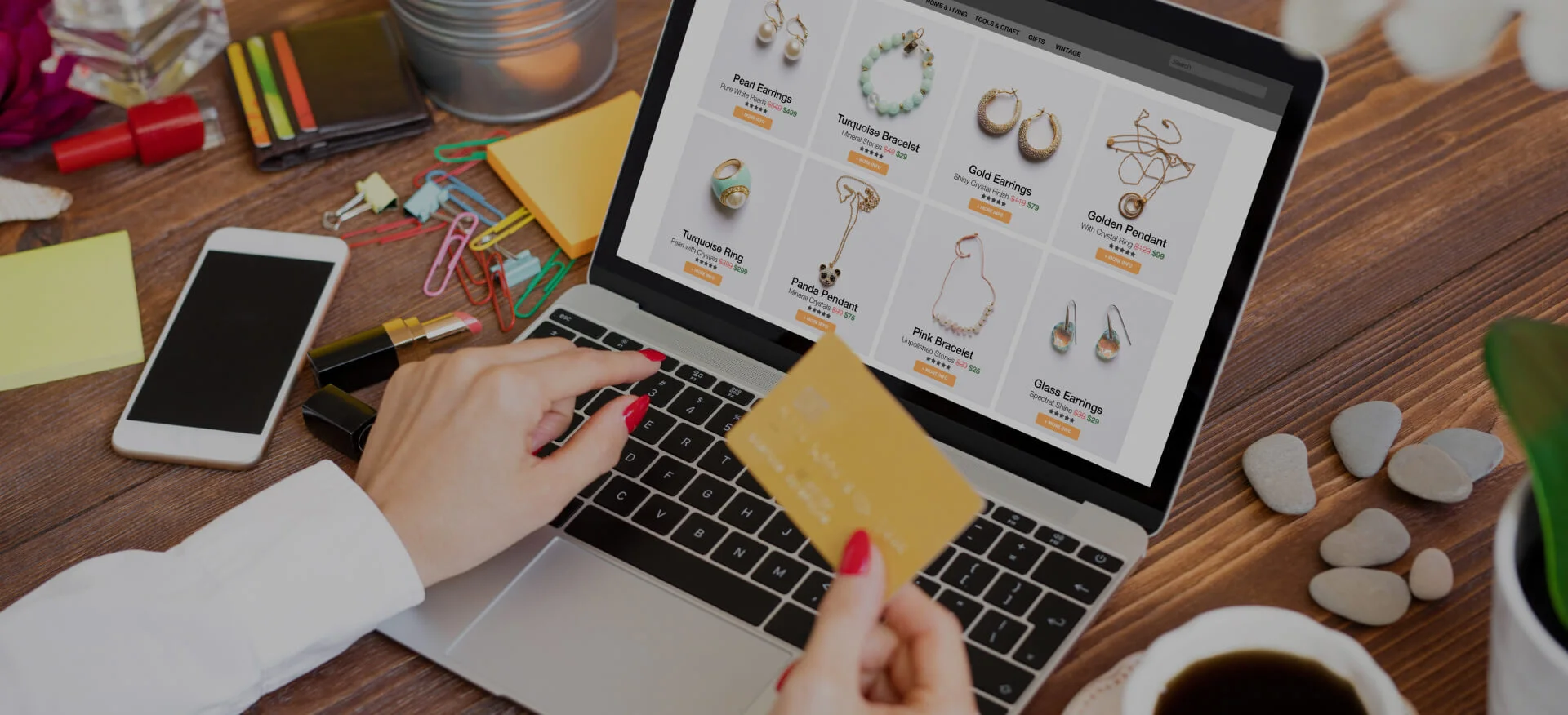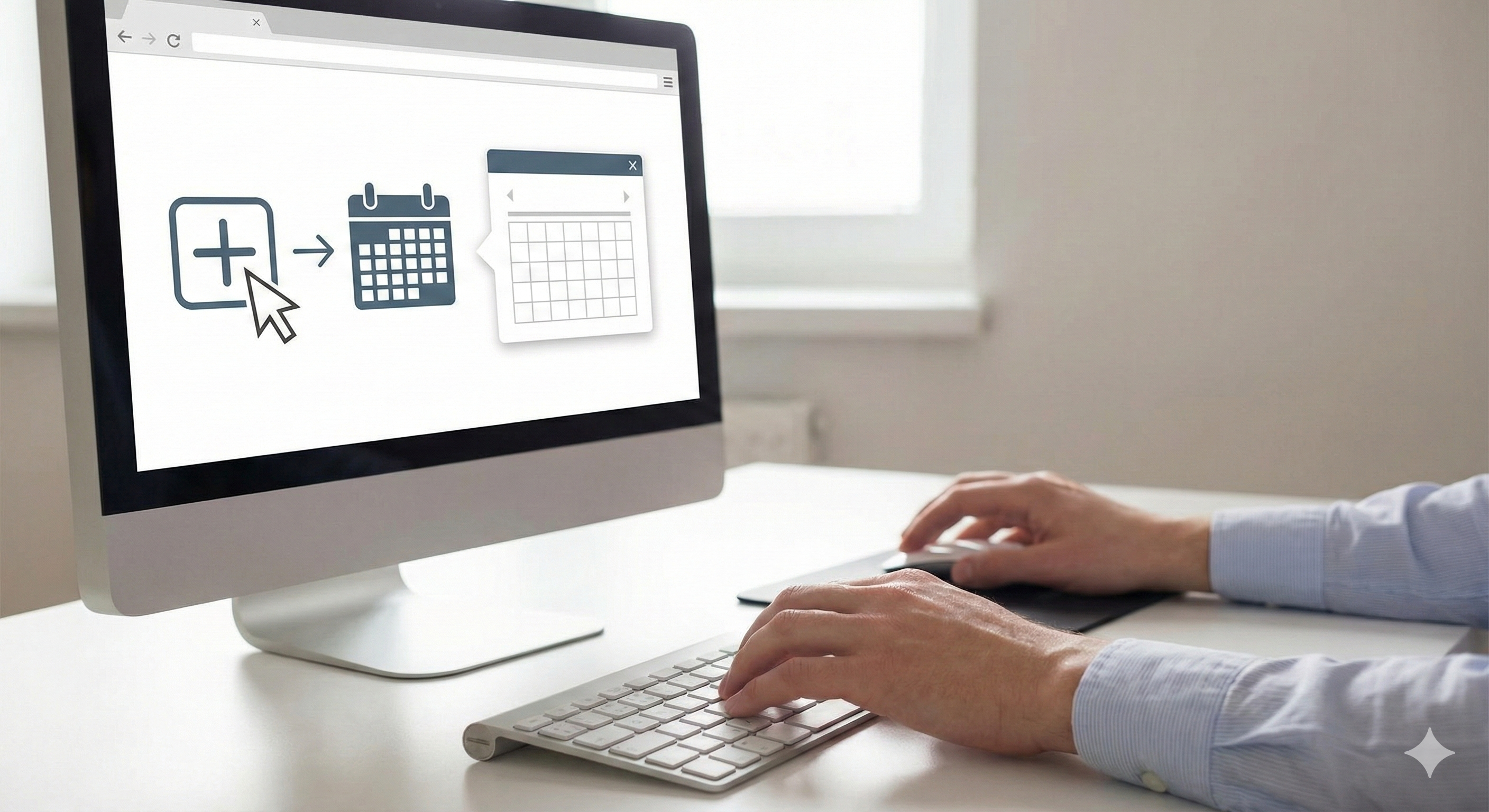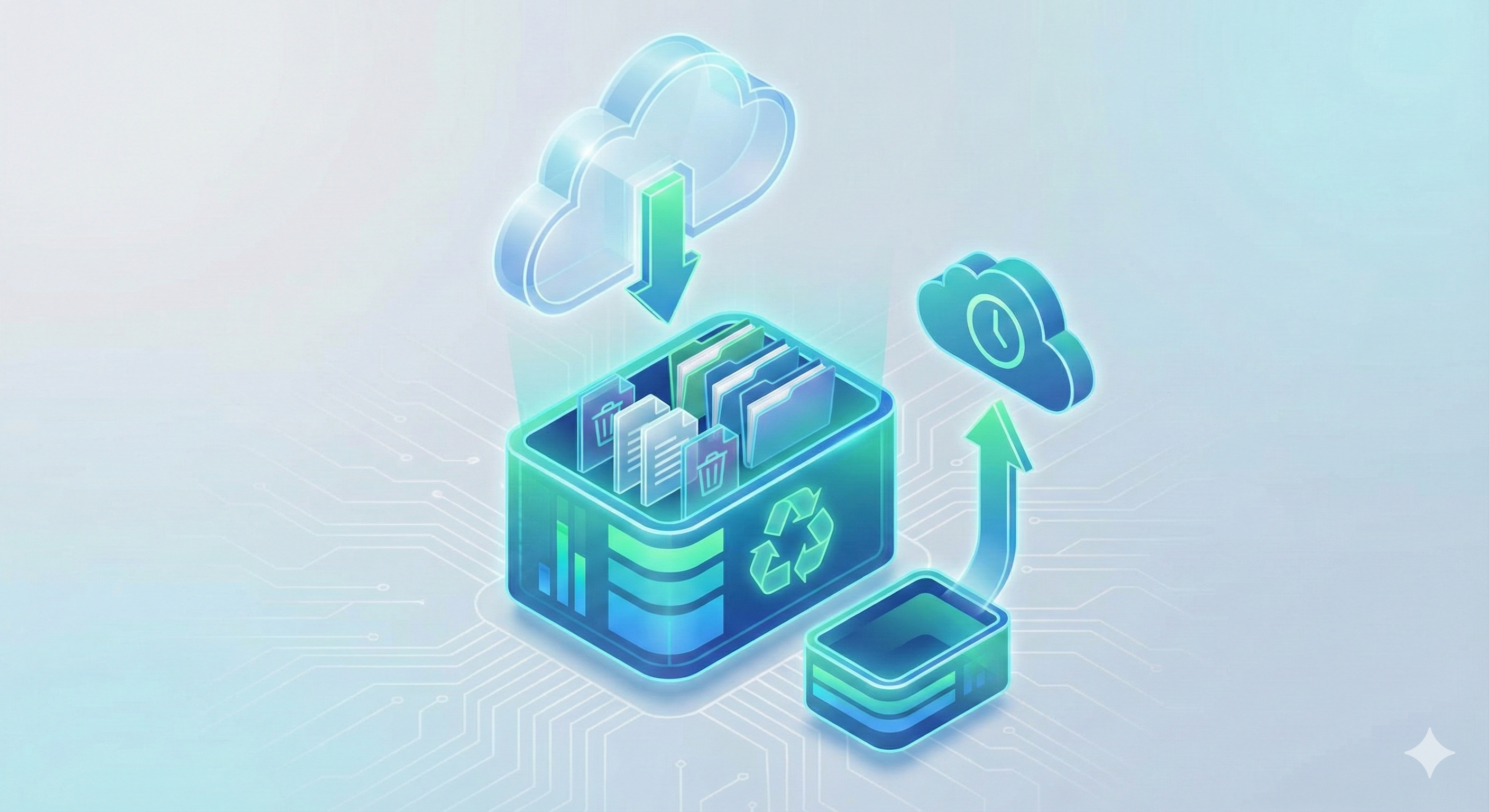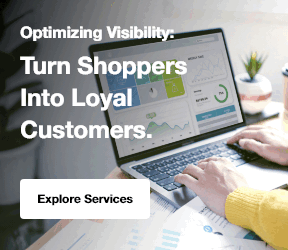The world of eCommerce has totally changed how we shop and do business. More and more people are turning to online shopping for its convenience, variety, and often better prices. Shopify online shopping continues to grow in popularity, offering an easy and efficient platform for entrepreneurs to get started.
And it’s not slowing down anytime soon; the global eCommerce market is expected to hit around $4.32 trillion by 2026. That means there’s a huge opportunity right now for anyone thinking about starting an online business. With tools like Shopify, launching Shopify store is easier than ever, even if you're not super tech-savvy.
Shopify is one of the most popular platforms out there, and for good reason. It’s simple to use, packed with helpful features, and gives you everything you need to build, run, and grow your Shopify ecommerce website. Whether you're starting small or dreaming big, Shopify can grow with you.
How To Start A Shopify Store? 10 Steps
Launching an online store involves identifying your target market, sourcing products, selecting a platform, building your brand, and promoting your business to drive sales.
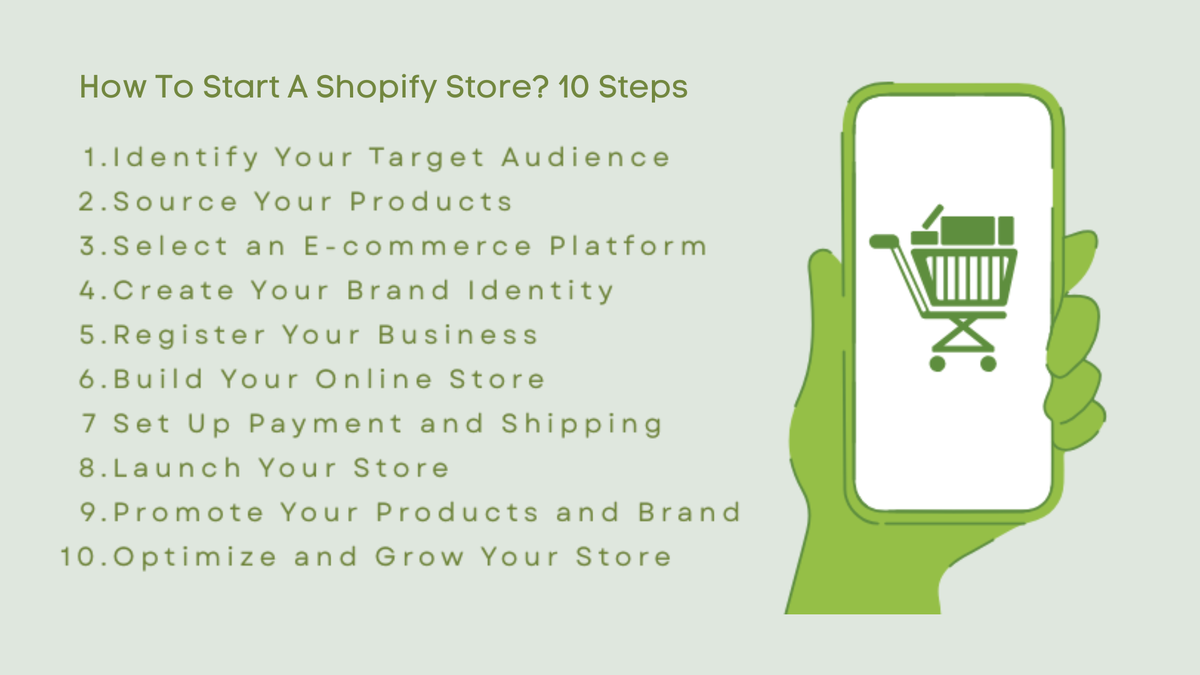
Now, let’s discuss each step in detail.
1. Finding your target audience
It is an important step when starting an online store. Knowing your audience helps you build relevant products and create effective marketing strategies that resonate with them, ultimately increasing conversions and reducing ad waste.
To identify your audience, start by defining key demographics such as age, gender, location, income, and interests.
Utilize tools like Google Trends, Facebook Audience Insights, Reddit, and Quora to gather data on what your potential customers are interested in and how they behave.
Additionally, research your competitors to understand who they are targeting and what their customers are saying in reviews. This research will give you valuable insights into gaps and opportunities in the market.
2. Source Your Products
Source your products by selecting a suitable business model, choosing reliable suppliers, and evaluating product viability based on demand, profit margins, and shipping considerations.
When sourcing products, the first step is to choose a business model that aligns with your goals:
- Dropshipping: You don’t keep inventory; instead, suppliers ship directly to customers.
- Print-on-demand: Products are printed and shipped on demand based on customer orders.
- Wholesale: Purchase products in bulk at a discounted price and sell them individually.
- Handmade/Own Products: Create and sell unique, custom-made items that you produce yourself.
- Digital Products: Offer downloadable goods such as eBooks, courses, or digital art.
Once you've selected a business model, it's time to find the right suppliers to provide the products for your store.
If you choose dropshipping, platforms like AliExpress, Oberlo, or Spocket can connect you with suppliers who handle fulfillment and shipping directly to customers.
Before committing to a product, it's important to assess its potential for success.
Start by checking the profit margins, ensuring that the cost of goods and your selling price leave room for a sustainable profit. Next, consider the shipping costs and speed, as timely delivery is crucial for customer satisfaction.
Finally, it's essential to evaluate product demand using tools like Google Keyword Planner and SEMrush to analyze search volume and customer interest.
When sourcing products, you’ll need to decide between several options such as dropshipping or print-on-demand.
3. Choose an eCommerce Platform
Choose an ecommerce platform like Shopify that offers user-friendly features, secure hosting, and scalability to support the growth of your online store. Shopify is designed with ease of use and flexibility in mind, making it an excellent choice for new entrepreneurs.
When selecting an eCommerce platform, consider how it will integrate with your business model. How does Shopify work? Shopify provides a simple, user-friendly platform that’s perfect for both beginners and seasoned entrepreneurs, with tools to manage your products, payments, and shipping seamlessly.
This makes it an excellent choice for those starting from scratch.
Here's why you must consider choosing Shopify:
- User-Friendly Interface: Shopify's intuitive interface allows users with little or no technical experience to set up and manage their online store. Its drag-and-drop store builder ensures that you don’t need any coding knowledge to get started. This is perfect for those who want to focus on their business, not their website’s technicalities. Companies like Food And Beverage agency have complex products and services, Shopify makes managing an online presence simple.
- Scalability: Shopify is not only suitable for beginners but also grows with your business. Whether you're just starting with a few products or planning to scale up to hundreds or thousands of products, Shopify can handle the demands of growing eCommerce businesses. You can upgrade your plan as your business expands to access more advanced features and capabilities.
- Comprehensive Features: Shopify offers a wide range of built-in features, including customizable themes, a secure payment gateway, inventory management, and automated marketing tools. Plus, it integrates seamlessly with third-party applications to further extend its capabilities.
- 24/7 Support: As a new entrepreneur, you may encounter obstacles while building your online store. Shopify offers 24/7 support through live chat, email, and phone to help you overcome any challenges quickly. This ensures you can get back to focusing on your business with minimal downtime.
- Mobile Optimization Shopify ensures that your store is optimized for mobile, which is essential given that more than 50% of all eCommerce sales are made via smartphones and tablets.
- Security: Shopify is PCI-DSS compliant, meaning it meets the highest standards for online payment security. This provides peace of mind for both store owners and customers, ensuring sensitive payment information is always protected.
- Marketing and SEO Tools: Shopify is built with powerful tools that help boost your store's visibility. From integrated social media sharing to SEO optimization and email marketing apps, Shopify makes it easy to market your products and drive traffic to your site.
- Global Reach: With Shopify, you can sell internationally. It supports multiple languages, currencies, and international shipping options, making it easy to expand your business globally.
Explore Our eCommerce Marketing Services!
4. Design Your Brand
Design your brand by creating a memorable identity through a unique name, logo, voice, and aesthetic that resonates with your target audience.
- Create a Memorable Brand Identity: Your brand identity is key to standing out in a crowded market.
- Choose a store name: Use name generators to find a unique name that reflects your brand’s values.
- Check for domain availability: Ensure your store name is available as a domain for consistency.
- Secure social media handles: Claim your social media profiles to keep your branding consistent across platforms.
Your logo is an essential part of your brand identity. Use platforms like Canva, Looka, or Hatchful by Shopify to create a professional-looking logo.
5. Register Your Business
Register your business by selecting a legal structure, obtaining necessary licenses, and ensuring compliance with local, state, and eCommerce regulations.
- Choose a Business Structure: Selecting the right business structure is vital for both tax and legal purposes. If you’re running a sole proprietorship, it's a simple option suited for a one-person business, though it offers no personal liability protection. An LLC (Limited Liability Company) provides personal liability protection while maintaining operational flexibility, making it ideal for many small to medium businesses.
- Get Legal Requirements in Order To operate legally, it’s essential to take several steps. First, register your business with local and state authorities to ensure it's recognized and compliant with local laws. Next, apply for an EIN or tax ID, which allows you to hire employees and file taxes correctly. Additionally, research eCommerce-specific regulations, including sales tax laws. GDPR compliance for European customers and other applicable regulations to ensure your business meets all legal requirements for online operations.
6. Build Your Store
Build your store by selecting a theme, customizing your pages, and installing essential apps for product reviews, email marketing, inventory management, and analytics.
To pick a shop theme here are the steps given
- Choose a theme that fits your brand’s identity.
- Opt for free themes (basic customization) or paid themes (advanced features and flexibility).
- Ensure the theme is mobile-responsive for a seamless experience across devices.
- Select a theme with customization options to personalize the store’s look and feel.
- Shopify offers recommended themes tailored for different niches (e.g., fashion, home goods, tech).
With the following steps you can customize your store page:
- Home page: Capture attention with compelling visuals and clear navigation.
- Product pages: Include high-quality images, detailed descriptions, and customer reviews to build trust.
Add essential pages like About Us, Contact, FAQ, and Return Policy to improve customer experience and provide important information.
To enhance your store’s functionality, install essential Shopify apps. For product reviews, apps like Loox or Judge.me can help you collect and display customer feedback.
7. Set Up Your Checkout and Shipping
To set up your checkout and shipping, start by configuring payment gateways such as Shopify Payments, PayPal, Stripe, or choose manual payments depending on your preferences.
If you plan to target international customers, ensure your store accepts multiple currencies to accommodate a global audience.
Next, create shipping rules by selecting options like free shipping, flat rate, or real-time carrier rates, depending on your business model.
You’ll also need to differentiate between domestic and international shipping to cater to various regions.
To simplify the shipping process, you can use apps like ShipStation or Easyship for seamless order fulfillment and tracking.
To streamline your checkout process, it’s essential to choose the right payment gateways.
Understanding these details will help you manage your budget effectively and ensure that you’re maximizing your ROI.
Lastly, set up taxes by taking advantage of Shopify’s auto-calculated tax rates for most regions, but ensure you verify and adjust tax settings to comply with local requirements based on where your business operates.
8. Make Your Store Live
Before launching, go through a final checklist to ensure everything is ready.
Test the checkout process to ensure smooth transactions and ensure there are no issues during purchases. Check for broken links across your site to avoid any frustrating user experiences. Proofread product descriptions to ensure accuracy and clarity.
Enable SEO settings like page titles and meta descriptions to improve your store’s visibility in search engines.
Next, buy a custom domain either through Shopify or external platforms like GoDaddy. Set up domain forwarding and ensure your store has an SSL certificate for secure transactions.
Finally, remove password protection by going to Preferences → Disable password page, making your store public and ready for customers to explore.
9. Market Your Products and Brand
Market your products and brand by leveraging social media, influencer marketing, paid ads, email campaigns, and lead generation strategies to drive traffic and increase sales.
Here are the steps given for setting up social media pages:
- Instagram, Facebook, TikTok, Pinterest (depending on your audience)
- Use Canva to create consistent, branded content
- Leverage Influencer Marketing
- Partner with micro-influencers who have niche audiences
- Use affiliate programs with apps like Refersion
Next, to start with paid advertising, consider the following:
- Run ads on Facebook & Instagram
- Use Google Shopping Ads
- Implement retargeting with Facebook Pixel or Google Tag Manager
Moreover, you must consider creating an email list. Here’s how to:
- Offer discounts or lead magnets to encourage sign-ups
- Set up welcome email automation
- Use popups like Privy or OptinMonster to capture leads
10. Optimize Your Store for Growth
To optimize your store for growth, start by analyzing performance using Shopify Analytics to track key metrics like sales, traffic, and customer behavior.
You can also set up Google Analytics and Search Console for deeper insights into how visitors interact with your site.
Improving user experience is important to optimize your store’s speed with apps or by compressing images, and conduct A/B testing on product pages and CTAs to boost conversions.
To drive more sales, consider expanding your product line based on customer feedback and sales trends, and explore upselling and bundling opportunities to increase your average order value.
Finally, to automate and scale your operations, use virtual assistants or automation tools, and leverage platforms like Shopify Flow or Zapier to streamline workflows and efficiently grow your business.
FAQs
How much does it cost to start a Shopify store?
Shopify offers flexible plans to fit different budgets, with a free trial to test features. Additional costs may include domain, themes, and apps, depending on your setup.
Do I need an LLC to run a Shopify store?
You can start a Shopify store as a sole proprietor without an LLC. Forming an LLC provides liability protection but isn't required to operate.
Is Shopify profitable for beginners?
Beginners can profit on Shopify with the right niche, marketing, and effort. Success depends on product selection, customer acquisition, and consistent optimization.
How do I start a Shopify store for beginners?
Sign up for Shopify’s free trial, choose a theme, and add products. Customize your store, set up payments, and launch with basic marketing.
Conclusion
To recap, How To Start A Shopify Store involves 10 key steps: First, you need to find a target audience to understand who your customers are. Then, source your products, whether through dropshipping, wholesale, or creating your own items. After selecting your product model, choose a commerce platform, like Shopify, that aligns with your business needs. The next step is to design your brand, ensuring a memorable and consistent identity. Once your brand is set, register your business to operate legally and securely. With your foundation in place, build your store by selecting a theme and customizing your pages. Then, make sure you set up your checkout and shipping to ensure smooth transactions for your customers. After everything is ready, make your store live, ensuring everything is tested and working.
Next, focus on marketing your products and brand, utilizing social media, paid ads, and email marketing to drive traffic. Finally, optimize your store for growth by analyzing performance, improving user experience, and scaling your operations through automation. If you want to start your own eCommerce store it is an exciting journey, and there’s no better time to get started than now. With Shopify's free trial, you can begin building your store today, testing its features and customizing it to fit your vision. While building an online business takes time and dedication, the rewards of seeing your store grow and thrive are immensely satisfying.
So, take the plunge with Centric and start your journey today. Your future success is just a click away!
